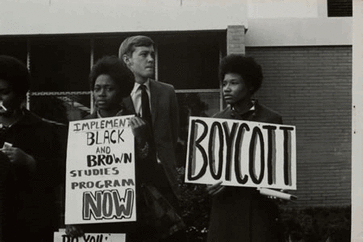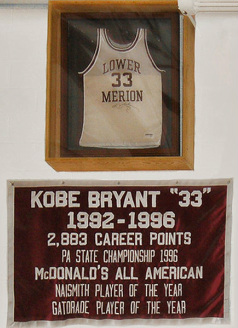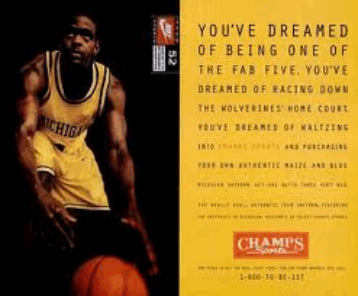
[1] For this research project, I will limit my area of study to Black and Latino/Chicano/Hispanic males.

This project seeks to embed critical educational studies, popular cultural studies, sports studies, and political economy. In short, I will be conducting a case-by-case analysis between ethnic minorities, public spaces, and sports entertainment. My methodological framework will [attempt to] provide a critical historiography in the relational positionalities of ethnic minorities and the commodification of their bodies and knowledges. I will conduct discourse analysis of three particular events: 1) San Fernando Valley State College’s 1968 student occupation of the administrators building; 2) Michigan State University’s ‘Fab Five’ 1990’s basketball hype; and 3) Kobe Bryant and the 1996 National Basketball Association draft. By analyzing these three particular historical phenomena, I strive to make evident the evolutionary-representation of students of color in higher education; more significantly, the means by which neoliberal discourse and hegemony have appropriated alternative-potentialities for non-western conceptions of reality.

This research project invokes to further suggest that minority students (ethno-racial) in higher education spaces have been appropriated; specifically, I would like to evidence the claim that within the neoliberal experiment’s marketing of sports, minority students are conceived of to be of a particular kind of intellectual property. While the first half of this research will critically analyze the socio-cultural dimensions of university difference appropriation, the second half of the research project will research how sports have been used as a tool for socio-cultural advancement of minority politics.
In-class text:
- Boyle, James, Shamans, Software and Spleens (2003).
o Pertaining to intellectual property changes in law within higher education
- Coleman, Gabriella, Coding Freedom: The Ethics and Aesthetics of Hacking (2013).
o Neoliberal and liberal discourses/analysis and the means by which political ruptures can occur within these very frameworks.
- Coombe, Rosemary J., The Cultural Life of Intellectual Properties (2001).
o Appropriation of sports mascots
o Consumption of “the other”
Supplementary text (tentative):
- Bloom, John and Michael Nevin Willard ed., Sports matters: race, recreation, and culture (2002).
- Ferguson, Roderick A., The Reorder of Things: The University and its pedagogies of minority difference (2012).
- Jay, Kathryn, More than just a game: sports in American life since 1945 (2004)
- Shapiro, Harold T., A larger sense of purpose: Higher education and society (2005).
- Sperber, Murray A., Beer and circus: how big-time college sports is crippling undergraduate education (2000)
Okay y’all, so this is where my train of thought has taken me thus far. I’d really like to follow like Coombe and Coleman that despite pervasive structures of exploitation, political resistance occurs. I am hoping to play around with theories of utopia, as well as Deleuze and Guattari’s conception of rhizome. All feedback is very much appreciated. Please and thank you.
 RSS Feed
RSS Feed
